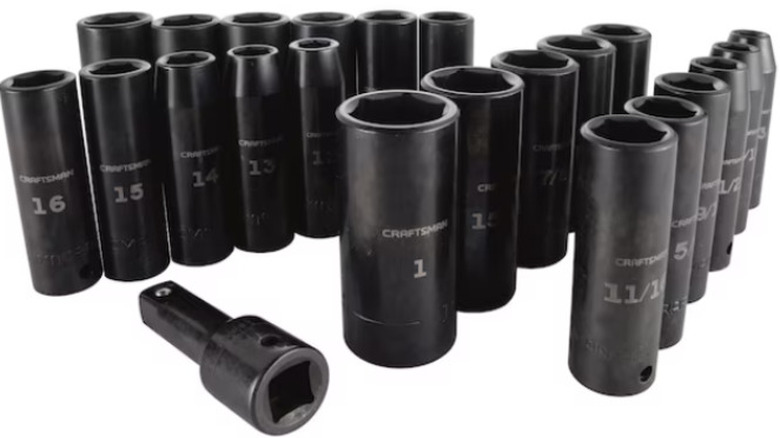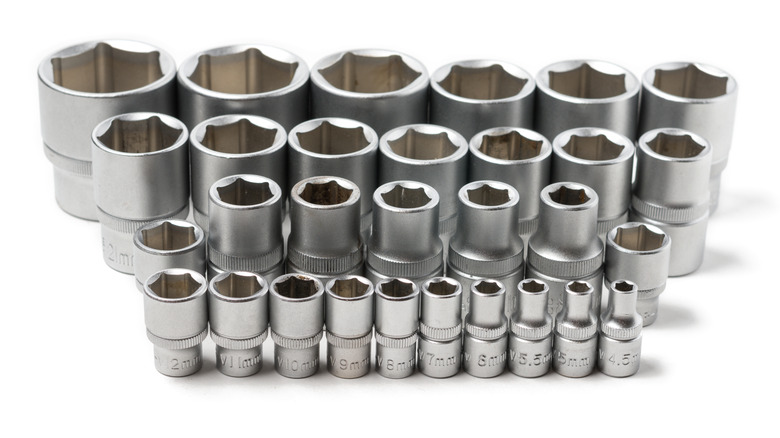Why Do Impact Sockets Have Holes? Here's What They're For
When you're tackling a high-torque job that requires a durable solution, there's nothing like a set of dependable impact sockets to keep you moving. They're how mechanics remove your tires' lug nuts, or lug bolts, depending on your car manufacturer, and they're also great for rusted bolts that just wouldn't budge otherwise. But if you've never used impact sockets before, you might not know that little hole you see on the side is there to keep the socket in place.
Often called a "cross hole," this handy feature is located near the base of the socket. When properly attached, the hole is lined up with the small retaining pin on the impact wrench itself. Once the tiny mechanism is engaged, the socket is locked tightly into place. So when work begins, you shouldn't have to worry about whether or not you're facing a dangerous situation later. Without this built-in lock, the immense force barreling through the wrench's drive could either damage the socket, or send it flying, putting you in harm's way.
But some impact sockets may actually not have holes at all. They're meant for impact wrenches that use a friction ring system, which takes advantage of internal pressure to hold the socket in place. If you have this type of impact wrench, you may still be able to use impact sockets with the hole. But before you do, consult your owner's manual to ensure these sockets are indeed compatible with the model of wrench you're using.
Impact sockets vs. regular sockets
When using impact sockets constructed with a cross hole, there may be times when you just can't get to the bolt. Either the socket you've attached is too short, or maybe you've just underestimated how deep you need to reach. If so, you can use an extension bar. It attaches to your impact wrench via the retaining pin, just like the impact socket. But the extension bar has its own small pin that engages the impact socket you need for the bolt. While the extension bar looks similar to one used on a standard wrench, they're actually much different.
In fact, standard sockets are great for certain everyday tasks, but when it comes to high-torque impact work, they're not recommended. The reason for that has to do with what the sockets themselves are made from. Impact sockets are usually constructed of thick chrome molybdenum steel, which is much tougher and can handle intense vibrations without breaking. Regular sockets, however, are typically made from thinner chrome vanadium steel, which isn't as strong.
But while you can't use regular sockets on impact wrenches, you can use impact sockets as regular sockets. Since impact sockets are heavy-duty and can handle tougher work, it might even make more sense to do so. But impact sockets can have a harder time negotiating tight spaces, and there's also the issue of cost, as you'll typically pay more for impact sockets than regular sockets.

